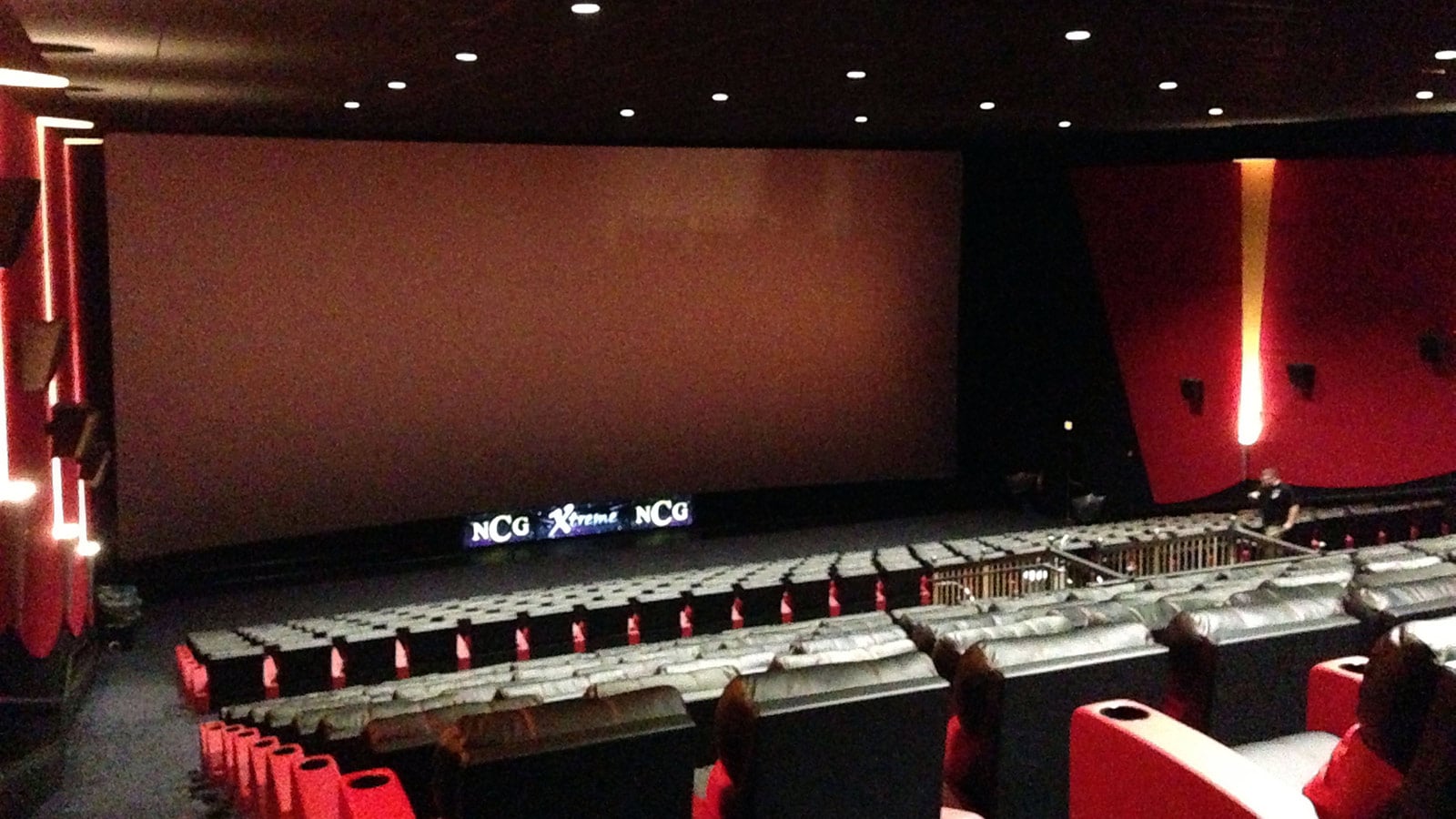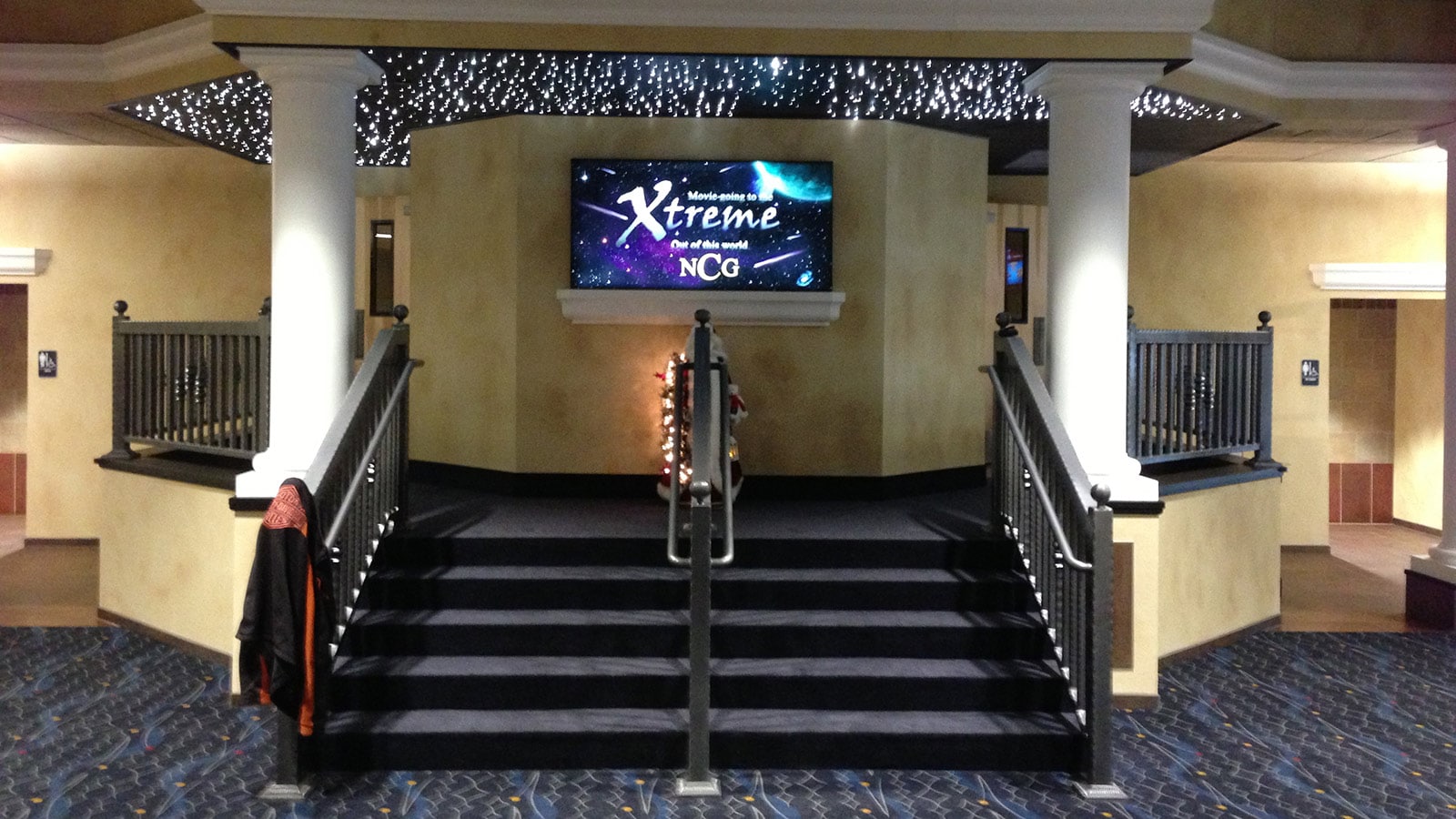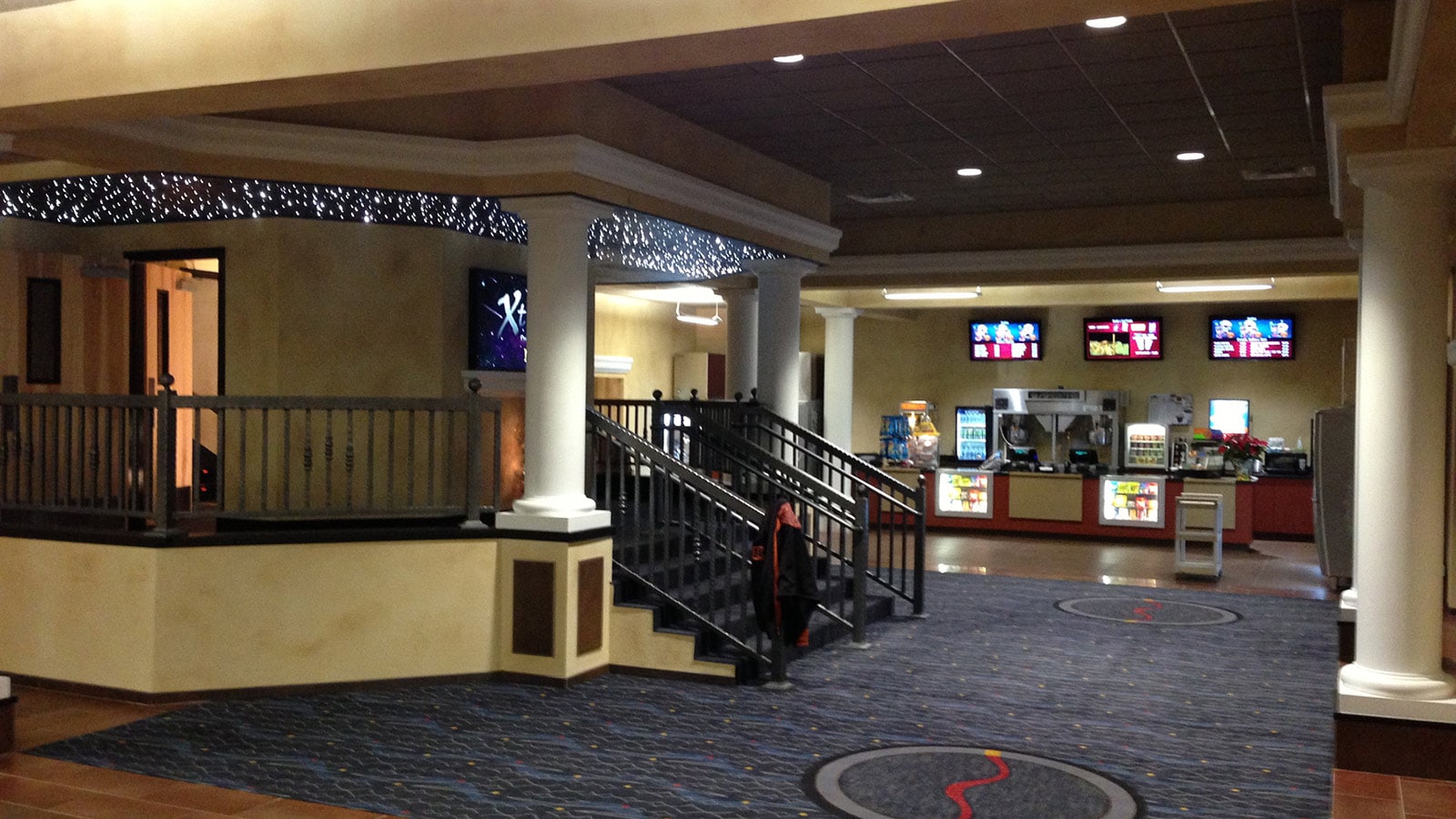It's an amazing sound system. In a recent trailer, the explosions and gunshot effects—with sound going from one corner to another—were just phenomenal.”
Mark HenningChief Operating Officer, NCG Cinemas
The 18-screen multiplex NCG Eastwood Cinemas in Lansing, Mich. has selected a Meyer Sound cinema loudspeaker system for its premium “Xtreme” screening room.
“It’s an amazing sound system,” says Mark Henning, chief operating officer for NCG Cinemas. “In a recent trailer, the explosions and gunshot effects—with sound going from one corner to another—were just phenomenal. I also remember a scene from ‘The Hobbit’ inside a cave, with footsteps in water and water dripping from the walls. The clarity and detail were astonishing.”
The installation comprises three Acheron 100 and three Acheron LF screen channel loudspeakers, 10 X‑800C cinema subwoofers and 26 HMS‑10 cinema surround loudspeakers. The system is driven and optimized by a Galileo loudspeaker management system with three Galileo 616 processors.
Ken Angst of Washington, Mich.-based Audio Imaging Specialists served as system integrator. “They were looking for the highest quality audio, and I knew that Meyer Sound’s self-powered technology makes a substantial difference,” says Angst. “It sounds absolutely awesome in that room. It was an honor to put it together.”
The Eastwood audio system was pre-wired for its future implementation of the Dolby Atmos format.
The “Xtreme” screening room was built from the ground up as an addition to Eastwood’s existing 18-screen complex. In addition to the Meyer Sound system, the room features a Christie digital projector, a 74-foot wide screen, a RealD 3D system, and premium seating—including a number of reclining love seats.
“The Meyer Sound audio quality certainly is impressive, and our customers have noticed the difference,” says Henning. “Without question, along with the screen and the seating, it completes our full ‘Xtreme’ movie-going experience.”
Headquartered in Owosso, Mich., NCG Cinemas operates 14 theatres with a total of 137 screens, primarily in smaller cities and metropolitan suburbs in Michigan, Georgia, Tennessee, and Indiana.



